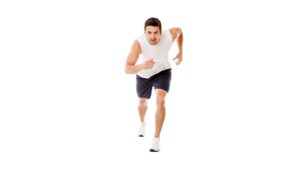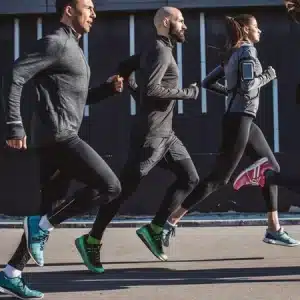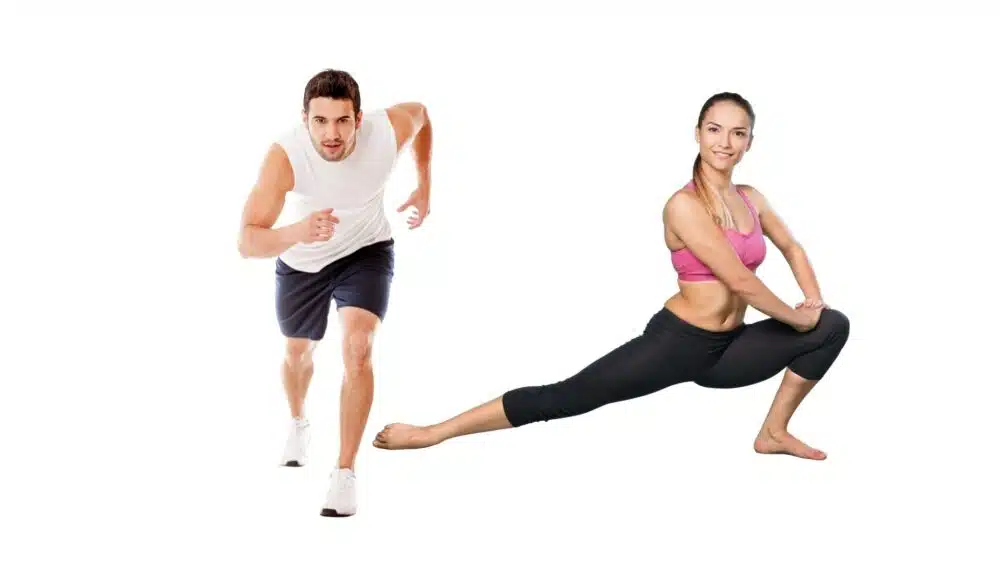Achieve Peak Performance
Athletes and coaches have been pondering for years on what are the best possible workouts or training in order to achieve peak performance for a given season. There are many different methods that we can apply to each individual or group of people to improve their athletic ability but what workouts are going to produce peak performance? This article can introduce solutions to help solve this issue.
Movement Screen Analysis
To achieve peak performance, the first thing in the training I would employ is a movement screen analysis. We want to see if the individual has optimal mobility and stability to be able to perform exercises such as squat, deadlift, bench press, etc.
We have to also understand that every individual has a different anatomical structure. For example, Dr. Stuart McGill would state that Eastern Europeans were born with a Dalmatian hip (shallow hip socket) and this can lead to hip displacement as toddlers but they end up becoming great Olympic lifters.
Where there are certain populations that were born with a deep hip socket and unfortunately as they rise up from the squat, they run out of movement and this causes their bones to rub on each other. This problem would lead to injury, particularly in the lumbar region of the spine (1).
When executing exercises such as a squat or deadlift, you want to create a Lifter’s Wedge and this concept was created by Dr. Stuart McGill. The purpose of this movement is to reinforce spinal stability and when executing the Lifter’s wedge, you want to first utilize a broomstick or dowel before moving onto a barbell.
The objective of this exercise is to grab these objects and feel like you’re bending them, by executing this movement will allow you to activate your shoulder blades (i.e. bring your shoulders down and back). It is also important to activate your glute muscles because this will allow you not to hyperextend the low back (1).
Squat Progression Exercise Training For Peak Performance
Squat progression exercises & training are necessary for achieving peak performance. For the squat progression, you need to follow the exercises below:
Short Stop Squat:
Short Stop Squat exercise was popularized by Dr. Stuart McGill and the movement is as follows:
- Hands on your thighs
- Drop and retract your shoulder blades (pull your shoulders back)
- As you hinge from your hips slide your hands towards your knees (1)
Diver’s Squat:
Diver’s Squat exercise was popularized by Dr. Stuart McGill and the steps are similar to the shortstop squat except you raise your shoulders and press your hands together (1)
Goblet Squat:
Goblet Squat exercise was popularized by Dan John. Please utilize a dumbbell or kettlebell and perform the squat. Please grab the dumbbell or kettlebell and place this object towards your sternum and you can make the exercise more challenging by bringing either object away from you while performing this position. This will allow you to utilize your core stabilizers to help keep your spine in an optimal neutral pattern.
Barbell Back Squat:
For barbell back squat, please place the barbell on the middle of your back and hinge from your hips and squat down (hold this position for two seconds before rising up). As you get stronger please add weighted plates to perform this exercise.
Single-Leg Suitcase Squat:
For single-leg suitcase squats, please either utilize kettlebells or dumbbells on each hand as if you were carrying a suitcase and please perform this exercise from the floor in a split stance before progressing onto the bench. You want to place one leg behind the bench and please stand on the other leg while performing this exercise. You want to squat down while holding these objects and please gradually rise up. That is one rep.

Deadlift Progression Exercises Training for Peak Performance
Further, the deadlift progression exercises & training are essential for achieving peak performance. For the deadlift, the progression will be as follows:
Chair of Death:
Please utilize either a broomstick or dowel and stand in front of a bench. You want to make sure that a dowel or broomstick is touching your tailbone, your spine, and the middle of your head. As you squat down you want to hinge from your hips (push your glutes backward), please make sure that you do not lose contact with either the broomstick or dowel. This exercise will teach you optimal hip hinge patterns which are critical for the squat or deadlift (2).
Perform deadlift with:
- Kettlebell or dumbbell with a yoga block
- Kettlebell or dumbbell without a yoga block
- Trap-Bar Deadlifts
- Single-leg Romanian Deadlift (RDL) with a kettlebell or dumbbell on each leg.
Increasing Running Volume for Endurance Athletes for Peak Performance Training
For endurance athletes, increasing mileage (endurance base) is critical for their upcoming season. It is noted that elite endurance athletes who are preparing for events such as 3000 meters through the marathon usually average anywhere from 60 to 100 miles per week (96 to 160 kilometers per week) as part of their training routine. Whereas masters athletes (40 years and over) will do less volume and incorporate sports-specific strength programs and other various forms of cross-training to enhance their performance.
It is very important for any category to follow mobility, stability, and sport-specific skill work (i.e. running form drills) in order to optimize their CNS (Central Nervous System) to enhance their running economy and prevent injury as well.
The following is a recommended schedule to increase running volume over a given period:
Week One Week Two Week Three Week Four Week Five Week Six
30 MPW 30 MPW 36 MPW 36 MPW 40 MPW 30 MPW
As you can see from the schedule above, the volume of running is being increased by two percent every two weeks and by utilizing this method, one will slowly adapt to the training that is being presented to them. It is also wise to incorporate recovery weeks so that the individual can finally adapt to the training that is being presented to them.

It is also noted to change one’s running footwear every three to five hundred miles worth of use for peak performance training. It is best for these individuals to purchase three pairs of footwear (one for training, one for speed work, and one for competition), so this way it can preserve the life of these shoes and prevent injury at the same time. It is also recommended to go into a running specialty store to have one’s gait properly analyzed, so that way one can purchase the right pair of shoes for their needs.
Nutrition for Athletes To Achieve Peak Performance
The most important thing we need to address for achieving peak performance after training is that we get proper nutrition and adequate sleep which play a vital role in a resistance and endurance training schedule. It is important that these individuals who participate in vigorous exercise focus on quality nutrition such as fruits and vegetables with a high emphasis on vitamin C, potassium, vitamin E, and D. Also they should be focusing on foods with high-quality protein such as chicken, fish, eggs, beans, nuts, etc.
We also have to understand that certain individuals are averse to particular foods. For example, some people may be lactose intolerant (cannot consume dairy), so it is wise for these individuals to get calcium from other sources such as spinach and kale. It is also wise for these individuals to take both a vitamin D or calcium supplement and an iron supplement (for those individuals who are training in altitude).
For individuals who consume a plant-based diet (vegetarian), it is best to consume protein-based foods such as chickpeas, lentils, beans, soy, etc. It is also recommended for these individuals take a vitamin B12 supplement.
It is also advised that one should follow optimal hydration and sleep schedule when participating in high-quality exercise programs. It is noted that one should consume eight to ten glasses of water a day to maintain one’s hydration levels and also eight to ten hours of sleep is optimal in order to reach peak athletic performance.
Conclusion
In conclusion, by following an individualized training program, one can reach their fitness and athletic goals and achieve peak performance. It is also recommended to work with a strength coach or physical therapist to help reach one’s true ability and at the same time prevent injury as well. Also, please subscribe to www.healthieyoo.com for more tips to increase athletic performance.

Venkat Reddy
Related Posts

Orthobiologics – Yes, Your Body Can Heal Itself
Over the years, we’ve seen several interesting innovations in orthopedic and musculoskeletal medicine. The advent of platelet-rich plasma (PRP) treatments was a massive step in

Why do women and girls participate in sports? Why not?
Why do girls and women participate in sports? Why not? “Empowered women, Empower women. Empowered women empower an entire village” Sport was my catalyst; inclusion, belonging,

Sports Nutrition – Nutrients Matter, Not Calories
Sports nutrition and its importance Sports nutrition refers to nutritional strategies specifically implemented to promote an athlete’s performance. This can help the athlete prepare

Periodization and how does it help athletic performance?
Periodization and Athletic Performance What is periodization and how does this concept help athletic performance? Periodization first came into the concept by Russian Coaches

Does Tight Hip Flexors Increase Athletic Performance?
Do tight hips or tight hip flexors increase your athletic performance? Does having tight hip flexors increase your athletic or sports performance or can

Hydrating for Athletic Performance
Hydration for athletes A tailored hydration plan for athletes, based on an athlete’s fluid and sodium loss has the potential to improve anaerobic power,

